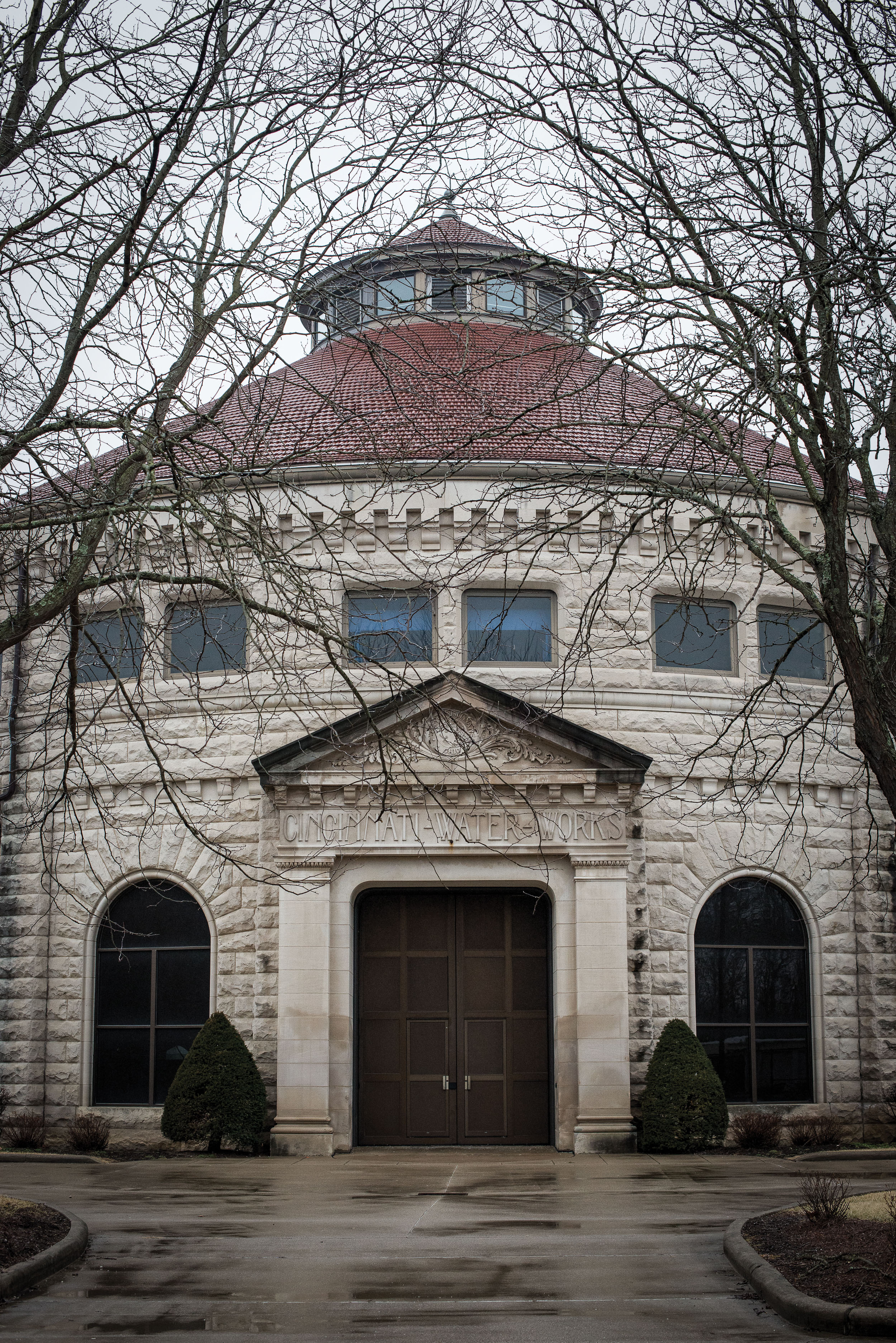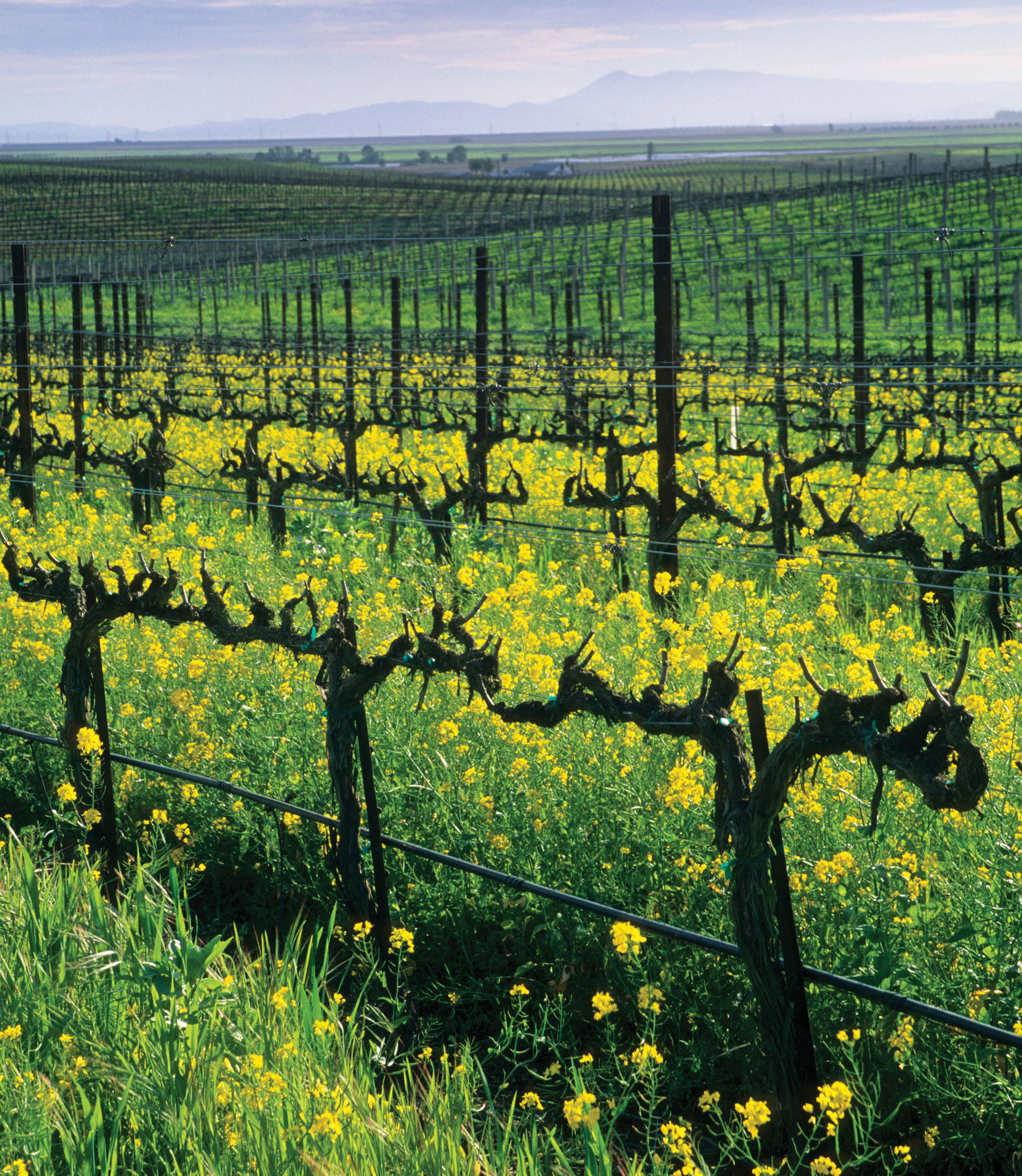River to Glass

We take it for granted, but safe, quality drinking water is the ultimate local product.
Bread may be the staff of life, but it’s water that makes the bread—and the beer or wine to go with the bread, and, well, just about every other foodstuff that we depend on. Clean, plentiful water is as basic to everything in and about our lives as the air we breathe.
We’re lucky: The chance is remote that southwest Ohio would ever suffer a dearth of water, a natural or human catastrophe drastically limiting the abundance we pretty much take for granted. Most of Greater Cincinnati’s drinking water, or potable water (also called finished water), comes from the Ohio River—an endless source, for all intents and purposes. In addition, Southwest Ohio has huge subterranean, high-quality aquifers. Regarding water, we’re rich.
“Raw water” may be something of a trend, but few of us actually drink unfinished water. That points to the second part of our local water bounty: We have high quality water because people make it that way, every day, 24–7–365.
Jeff Swertfeger, who monitors water quality at Greater Cincinnati Water Works, holds water from the Ohio River. Finished water (left) and raw (right).
Good Ol’ H2O
Greater Cincinnati Water Works (GCWW) is the dominant regional drinking water utility, producing more than 48 billion gallons of finished water per year. GCWW’s service area includes Cincinnati, most of Hamilton County, and parts of Butler and Warren Counties. GCWW also provides water to Boone County and Florence, KY.
Ohio River water is treated at the Miller Treatment Plant, which supplies about 88% of GCWW’s drinking water. It’s an extensive process: Water is pumped from the river for presettling, which removes most solids. It leaves that first tank for additional settling in two sequential reservoirs. From there, the water is filtered via sand and gravel. Next it moves to a system that is unique among water utilities: additional filtration through granular activated carbon, which is very effective at removing organic compounds. Then, the water is treated with ultraviolet light—again, a unique step among treatment protocols that GCWW adopted in 2013. Final steps adjust the pH (acid/alkaline) and add chlorine (for disinfection) and fluoride. That finished water is then pumped to a final reservoir, moving as needed to GCWW’s distribution system, made up of over 3,000 miles of pipes. Treatment includes over 600 quality control tests each day.
The balance of our local drinking water is pumped from the Great Miami Aquifer in southern Butler County and treated at the Bolton Plant in Butler County. Treatment at the Bolton Plant is similar, but different. It includes lime to soften the water, as groundwater can pick up minerals as it flows downward to an aquifer. Bolton does not use granular activated carbon, but it does include coal within the more traditional sand and gravel filters. After chlorine and fluoride are added, the finished water is ready to go.
For GCWW the two treatments are considered part of one overall system. Finished water meets or exceeds all state and federal health standards. Every day. 24–7–365.
Inside the River Station Pump House Jeff Swertfeger stands in front of one of the upgraded pumps (dark blue). Retro-fitted with state-of-the-art equipment, the pump house still houses all four of the original steam-powered engines. Details of their construction and service can be found at CincinnatiTripleSteam.org–tours are held monthly. An engineering marvel when it was constructed in early 1900, the pump house holds four of the world’s largest steam-powered vertical pumps. Each engine with a 30,000,000 gallon capacity ran continuously for 57 years until decommissioned in the early 1960s.
What’s in a Bottle?
Despite the high quality that defines most municipal water systems, some people remain suspicious that those safety assertions are limited, reflecting static conditions and missing the constant dynamics that can cause water quality to change by the day or even the hour or minute. Others charge that the quality tests themselves are rote: that analysts just check the box, so to speak. Yes, they test for what the Environmental Protection Agency tells them to, but those repetitive tests provide no assurance regarding myriad other contaminants. Skeptics counsel: City water is OK for showering, but don’t drink it. Buy bottled.
Tap versus bottled is, indeed, one of the biggest first-world decisions of the day. Lead in the water in Flint, MI, forced a hard look at every drinking water utility in the country. But water, like politics, is local. There is no lead in the water leaving GCWW’s treatment plants. (Potential lead issues arise when lead-free water flows through old lead pipes into homes; CGWW offers an online map showing lead lines and offers free testing kits.) The Ohio EPA posts monitoring results online so we can see what’s in our water.
Water utilities regularly check for classes and groups of chemicals beyond mandatory testing protocols. They evaluate treatment processes based on monitoring data and the likelihood that certain contaminants may be present in source waters or upstream from intake sites. And don’t forget that rivers, lakes, and aquifers have all benefited from 40 years of environmental progress—40 years of regulatory efforts limiting sewage discharges and industrial pollution. You can be skeptical (cynical?) about that, but you can’t deny decades of monitoring data.
The big picture of finished water in Greater Cincinnati becomes more complete every year. If the analytical profile of municipal water showed indicators of declining quality, that data would be pretty hard to keep hidden. GCWW’s finished water numbers are impressive. And let’s not overlook the resources required to manufacture, ship, and recycle all those millions of plastic water bottles.
Sometimes it takes an out-of-town expert to present and focus the issue. The online magazine Best Life recently ran a report titled, “The 25 U.S. Cities with the Best Drinking Water, Where the Tap Water’s Better Than Anything You Can Buy at the Store,” by Alex Daniel. City No. 8: Cincinnati. The analysis is based on data from the EPA, the Environmental Working Group (an advocacy group), and the American Water Works Association. Louisville had the nation’s third best water—also from the Ohio River.
Water to Wine (or Beer)
In the food world, water becomes many things, from Brussels sprouts to bread to beer. Cincinnati produces a lot of beer, which is about 95% water. The water’s gotta be good.
Consider MadTree Brewing. Each of the five or six batches MadTree brews each week requires 4,000 gallons of water, explains head brewer Ryan Blevins. He starts with Cincinnati water, right out of the tap. Blevins and his team then treat the water through reverse osmosis, yielding what Blevins calls “stripped-down” water—in effect, a blank slate. The water is rebuilt to a specific profile, then crafted further into selected types of beers and flavors.
Importantly, MadTree doesn’t pretreat because of quality concerns that the water isn’t “good enough.” They need custom water. Prior to MadTree’s move to Madison Road, the brewing team drew from an aquifer under the previous facility. They pretreated this water just like GCWW’s finished water.
Blevins explains that MadTree’s processes suit their beers. The stripped-down water allows them to mimic water from other locales, even countries, which is important if they’re brewing a Belgian or pilsner. He said other local brewers are different. How or whether tap water is treated depends on the brewer’s recipe. Some brewers don’t have any pretreatment prior to brewing; GCWW’s finished water is their starting point.
It’s also the starting point for a new urban farm in Cincinnati, right in the midst of the city’s old industrial heart in Spring Grove Village. 80 Acres Farm welcomes visitors, but don’t go looking for tilled fields or tractors or a red barn with a silo.
80 Acres is in an old warehouse, refurbished into what the farmers there call a plant paradise—specifically engineered rooms in which computers control lighting, moisture, CO2, temperature, and nutrients to create the most perfect tomatoes, peppers, lettuce, kale, spinach, arugula, basil, and more. It’s hydroponic farming, giving new meaning to the notion of eating water, not just drinking it.
Mike Zelkind is CEO at 80 Acres. Zelkind and his team use a fraction of the water used by traditional farms. They use or account for every drop of water, from liquid to vapor. The crops live in a water-based milieu, from roots to leaves. (See Farm the City)
80 Acres’ investment is grounded in Cincinnati water; yes, it is filtered first, primarily to remove fluoride (pH and hardness are OK), but nothing else is done to the water itself. Again, GCWW’s finished water starts an operation striving to provide the best non-GMO, organic, pesticide-free crops to markets and consumers. I visited the farm on one of our winter’s dreary 15° days. Zelkind picked some fresh basil, handing me a leaf. To die for. Best water I ever ate.
After sediment has been removed, the river water first passes through carbon filters, and then sand (above). Forty seven pools (right) filter water through 30 inches of sand before moving to the disinfecting facility where is passes through UV light. The Ohio river is monitored and tested constantly by the Greater Cincinnati Water Works (GCWW). With the ability to detect parts per billion of contamination, the facility can restrict raw water intake until natural and industrial pollution safely bypasses the city’s intake pumps.
What Affects our Water
Jeff Swertfeger is GCWW’s water quality and treatment superintendent, the guy who monitors and tracks the gargantuan Ohio River. What keeps him up at night? He cites three challenges:
Algae Algal blooms can produce toxins; one occurred in the Ohio River in 2015. A changing climate could make algal blooms more common. GCWW’s treatment is effective, but scientists like to know when it happens. Interestingly, the U.S. EPA in January awarded $681,343 to The Ohio State University for research on the prediction, prevention, control, and mitigation of freshwater algal blooms in the upper Ohio River basin.
Accidents and Spills The Ohio is a commercial river. In December, water utilities were on alert after a barge accident near Cleves leaked liquid fertilizer. That’s downstream for GCWW, but Louisville went into action, setting up a mobile lab on Christmas Eve to check the river hourly. The spill passed with no impact on Louisville’s finished water. Louisville then teamed up with counterparts downriver in Evansville.
Data Analysis Materials in water can be detected at the parts-per-quadrillion level. For public health, what do such specks-in-the-universe mean? Should any detection require multimillion dollar changes in treatments and operations?
More broadly, Swertfeger says GCWW is investigating different ways to respond to water quality issues within the distribution system itself, asking whether there are ways to resolve problems more locally, at distribution points rather than trying to revise centralized treatment, which might prove unnecessary or unhelpful. Monitoring and analysis can pinpoint issues that may be affecting some areas but not others. Localized efforts could be smaller, more efficient, even temporary.
The hard work continues. The water keeps getting better.
What Makes Hamilton’s Water So Good?
Hamilton, OH’s drinking water regularly wins kudos in the American Water Works Association’s “Best of the Best” water contests. Hamilton won the best water in Ohio award in 2017. In 2010, it was named best drinking water in the country. Hamilton has many natural advantages and a great water utility. Both are necessary for great drinking water—it doesn’t just happen. We discussed Hamilton’s drinking water treatment with J. Dwight Culbertson, manager of water and wastewater operations for the City of Hamilton’s Water System. He noted three key factors:
Groundwater vs. surface water
Hamilton’s water has a great start. Raw water is drawn from the Great Miami Aquifer, estimated to hold 1.5 trillion gallons. For drinking, groundwater has advantages over surface water: it’s less subject to contaminants and naturally filtered through beds of sand and gravel. The downside: It’s “harder” than groundwater, meaning it contains minerals like calcium and magnesium. The treated water leaving the Hamilton plant is relatively hard.
Disinfection
Most water systems use chlorine as the principal disinfectant. Hamilton uses chlorine dioxide, which is very effective at destroying microorganisms, including many viruses, and does not react with naturally occurring organic precursors. Water treated with chlorine dioxide does not retain the lingering, disinfectant kind of smell and taste sometimes associated with some tap waters.
Good Policies
Groundwater is a valuable local resource. Hamilton is part of the New Baltimore Groundwater Consortium, an association of seven area water systems that combined produce about 63 million gallons a day of drinking water. Additionally, Ohio has formal groundwater protection plans. These initiatives map aquifer characteristics, identify potential sources of pollution, and ensure that local governments include groundwater protection in their plans. Culbertson expects that state and Federal EPAs will likely add new standards for new contaminants. As groundwater protection increases, drinking water will get better.
Tom is a freelance writer specializing in environmental, energy, and transportation issues. He lives in Cincinnati’s Westwood neighborhood. He likes to garden, but, alas, the deer have robbed him of yet another earthly pleasure.








